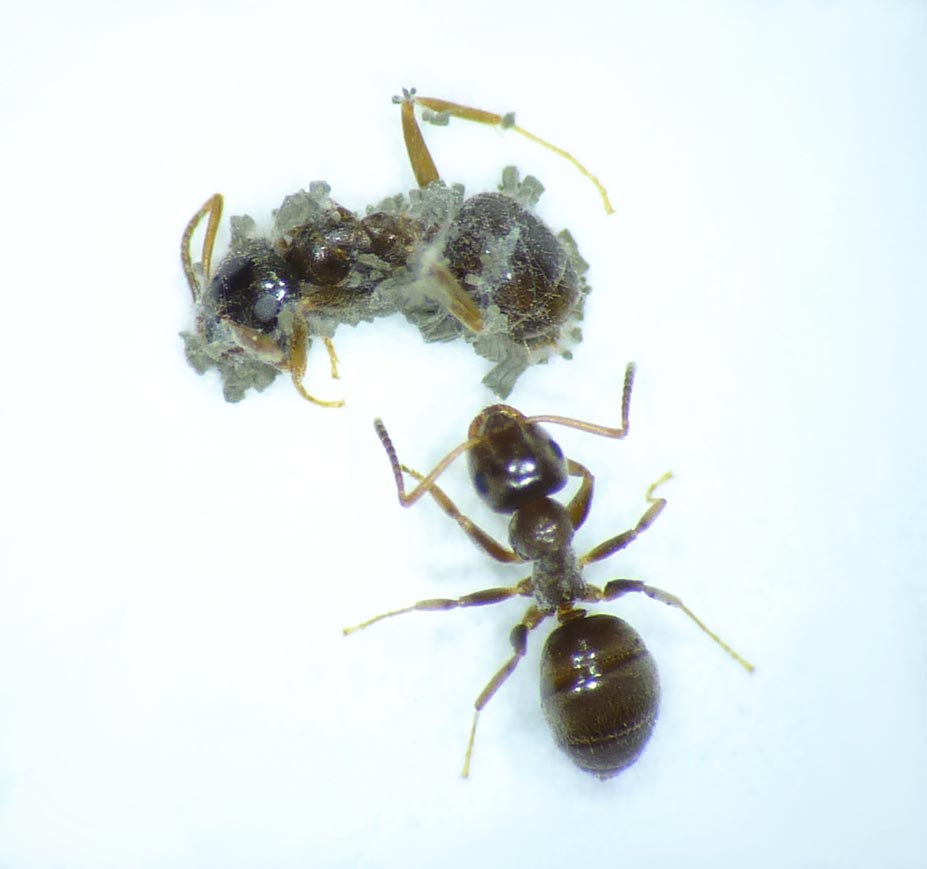March 24, 2015
Modelling biocontrol epidemiology in insect societies
Interdisciplinary project studied fungal pathogens used for biocontrol of pest ant species • epidemiological model published in the current issue of Journal of Theoretical Biology

© Matthias Konrad
How does group living affect disease dynamics? In an interdisciplinary project, Sebastian Novak, a PhD student in Nick Barton’s group, and Professor Sylvia Cremer jointly studied this question on the example of fungal pathogens that are used for biocontrol of pest ant species. They published their epidemiological model in the current issue of Journal of Theoretical Biology.
Social insects (the social bees and wasps and all ants and termites) are an ecologically highly successful group, and also many of the most devastating pest species are social insects, like e.g. the red imported fire ant and the Argentine ant. Their success is partly due to an elaborate “social immune system”, i.e. collectively performed disease defense displayed at the colony level in addition to individual immune defenses.
A major biocontrol measure against pest ants is the usage of obligate killing fungal pathogens, causing the green or white muscardine disease. In contrast to the most common diseases such as e.g. flu and chicken pox, these pathogens do not yet multiply in or on a living host, but only produce infectious stages after killing their host. Infection of new hosts is therefore mostly limited to contact with sporulating cadavers.
In such host-pathogen systems, social interactions between sick and healthy group members can only lead to a redistribution of infectious particles from initial exposure, leading to a “dilution effect”. This may reduce the exposure dosage below the critical infective dose, favoring the disease to die out. This protective dilution effect is further strengthened by disinfection and removal of infectious particles by collective health care.
The model is relevant for biocontrol as it takes into account the particular life history of obligate killing pathogens and the interactions between group living hosts, be it otherwise solitary species in their gregarious phase, such as migratory locusts, or social hosts, such as ant societies.



